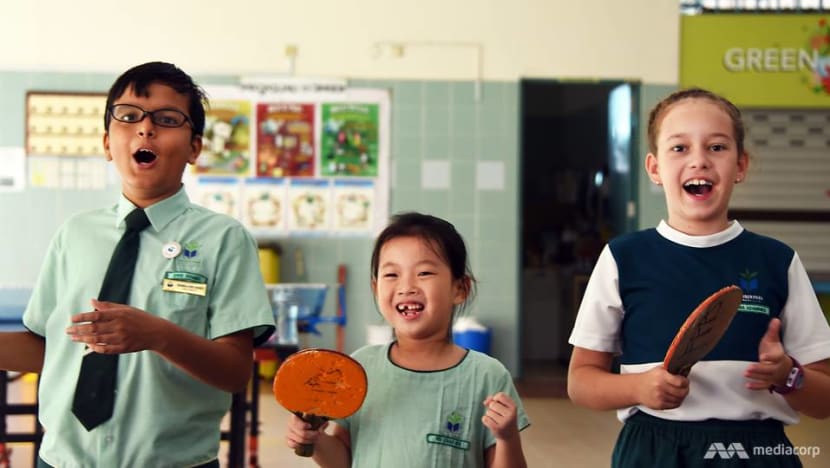Friends from other lands: The unique challenges of international students at one primary school
One is grappling with English; another with local food; a third takes tuition in her native Russian and Mandarin. At neighbourhood schools like Farrer Park Primary, international students are learning to fit in, creating a rich diversity of friendships in the process.
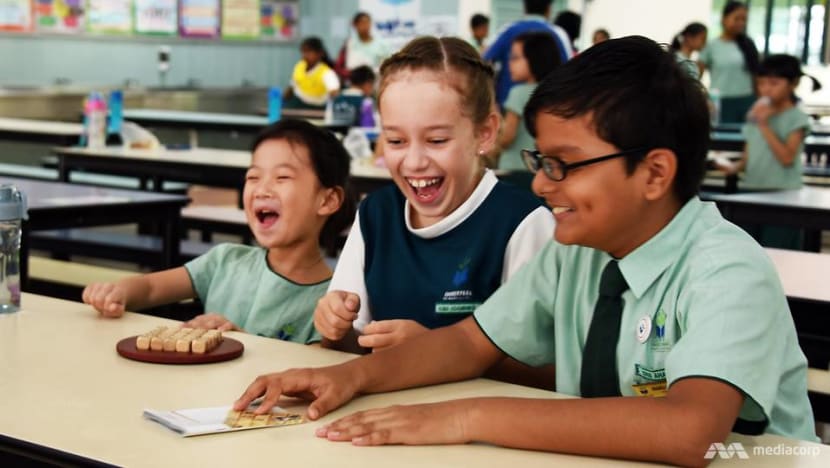
From left: China-born Wu Chaorui, 7, Russian Alina Adamenko, 10, and Ibramsa Idris Ahamed, 11, from India, are all students at Farrer Park Primary School.
SINGAPORE: They’re fiercely engrossed in their basketball game, shouts resounding over the canteen recess buzz. “Pass me the ball!” Ibramsa Idris Ahamed, 11, yells to his chubby-cheeked pal, Ahnt Phone Pai.
The ball curves into the hoop, and the boys – Idris from India, Phone from Myanmar, Kuo Chi-Yun from Taiwan, and Ng Kian Ping from Singapore – whoop and high-five each other. This group of Primary 5 friends is as spirited, and as international, as the game they’ve bonded over.
“We’re from different countries, but we focus on the similarities, not differences,” said Kian Ping, 11. “And we respect the differences.”
At Farrer Park Primary School, such friendships are not unusual. A small portion of its students hail from across the world: Vietnam, Thailand, China, Russia, even South America, to name a few places.
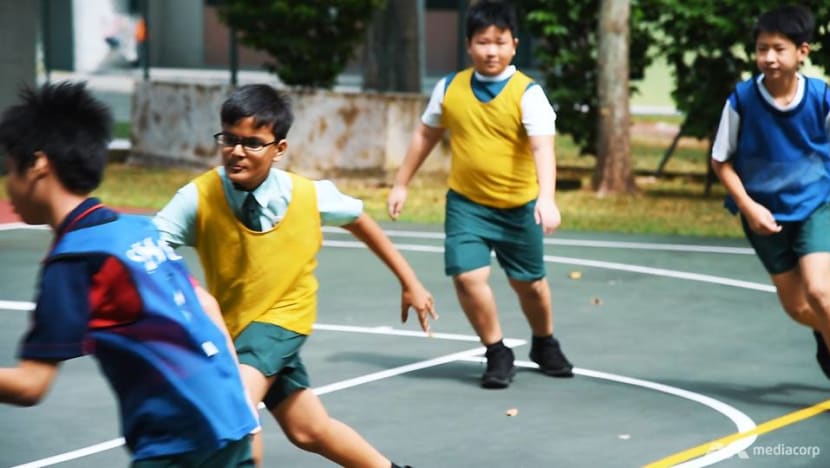
The same is true in a number of Singapore schools today. International students make up about 5 per cent of all pupils in primary and secondary schools and junior colleges, according to the Ministry of Education.
And they’re bringing with them both challenges and opportunities, for their schools and fellow classmates.
This is the story of three of these international students at Farrer Park Primary, and how they’ve become part of the fabric of Singaporean school life.
WATCH: Meet Chaorui, Alina and Idris (10:24)
WU CHAORUI, 7: STARTED OUT WITH ZERO ENGLISH
On school days, it is rare for seven-year-old Wu Chaorui to see her father when the sun is up.
After he drops her off at the school gates at 6.30am, he heads straight for his 12-hour shift as a deliveryman. The next time she sees him, it is usually at the dinner table.
Wu Xiao Jun has worked hard for his family since coming to Singapore in 2000. He brought his wife and son over from China in 2011, but when Chaorui was born here in 2012, she was sent back to be raised by her grandparents in Zhejiang.
“I couldn’t afford to raise her here,” said Mr Wu, who had to pay non-subsidised rates for her healthcare.
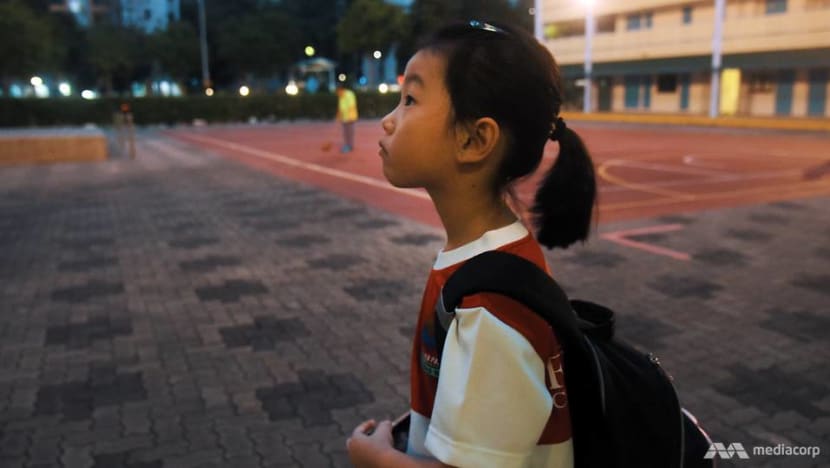
It was only in late 2018, when she was ready to start Primary 1, that Mr Wu felt the family’s finances were stable enough to bring her over for her education. (While Singaporeans pay no primary school fees, international students paid S$440 to S$700 a month in 2019.)
But Chaorui struggled to adapt to life in Singapore. She missed her grandparents and her many friends in her village school. Her biggest fear was language. “I didn’t want to come to Singapore,” she said hesitantly, in Mandarin. “I don’t know how to speak English.”
When she first came to Farrer Park Primary this year, her knowledge of the English language was, according to her English and Mathematics teacher Tan Jac See, “zero”.
“She knew very basic words like ‘yes’ or ‘no’, but other than that, she couldn’t speak English at all,” the latter said.
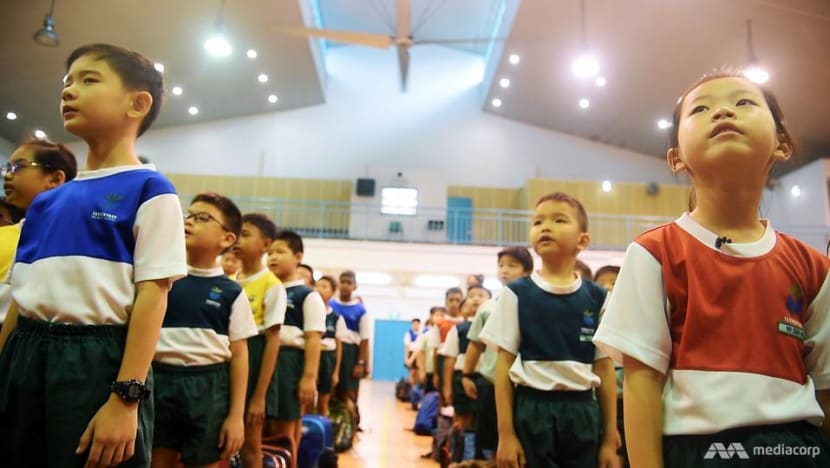
HELP FROM SCHOOL AND FRIENDS
For international students from non-English speaking countries, picking up the language is often their biggest hurdle, according to the school’s vice principal Wendy Lee.
“This is a challenge for them especially in the classroom because they may not be able to understand the teachers,” she said.
The school has programmes for students, both local and international, who may need extra help in English. Chaorui, for example, is involved in an after-school learning programme, and she attends the Learning Support Programme (LSP) for those with weak reading skills while her classmates have their regular English lessons.
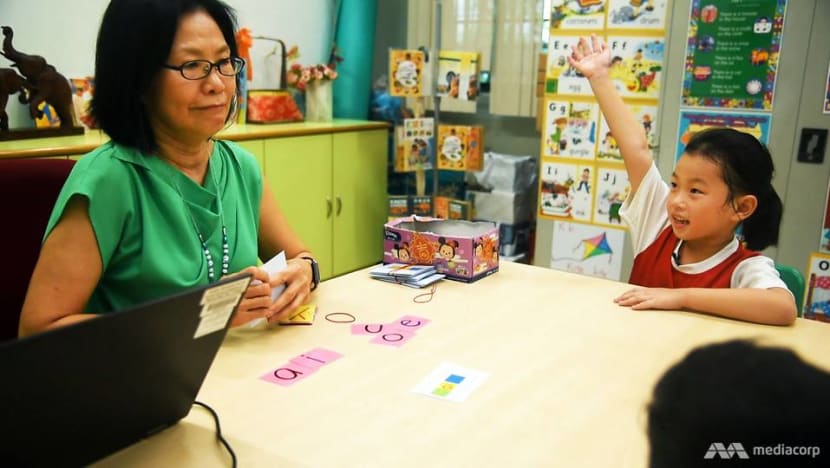
But help is also available from their peers. The school has a care buddy programme where students are appointed to look out for and befriend the newcomers. This, according to Wendy, works better than having a teacher do so instead.
“The buddy can also introduce them to other friends, and widen their circle,” she said.
And then there’s Chua Hian Boon. The solicitous seven-year-old boy approached Chaorui to make friends one day, and the two have been inseparable ever since.
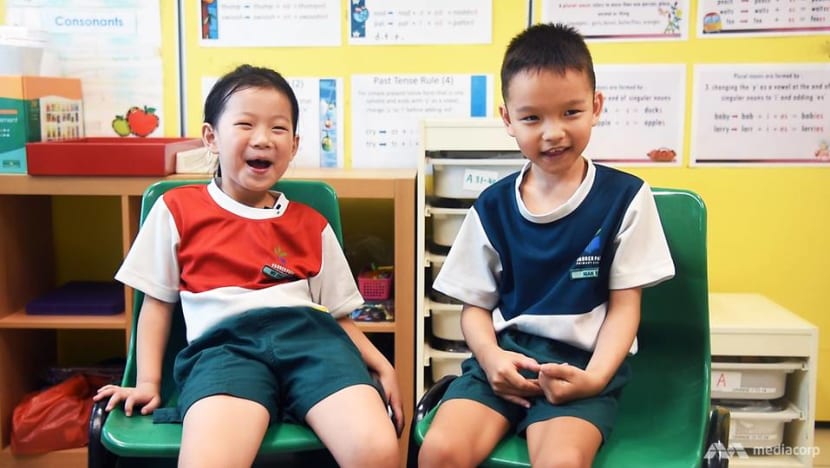
The pair enjoy running around the playground and exploring the school together during recess. Hian Boon talks to her in English, then instinctively repeats himself in Mandarin; or naturally translates for her what other people are saying.
“I think she is a very quiet person,” he said. “She answers my questions in a very soft volume. But I like her because she always asks me what book to read.”
He’s just one of the many children in the class who have, unprompted, rallied around to befriend Chaorui and help get her English up to speed.
“They help me explain certain instructions in Mandarin to her, and they have always included her,” said teacher Jac See. “When I tell them to find a partner, she’s always be able to find somebody who’ll work with her.”
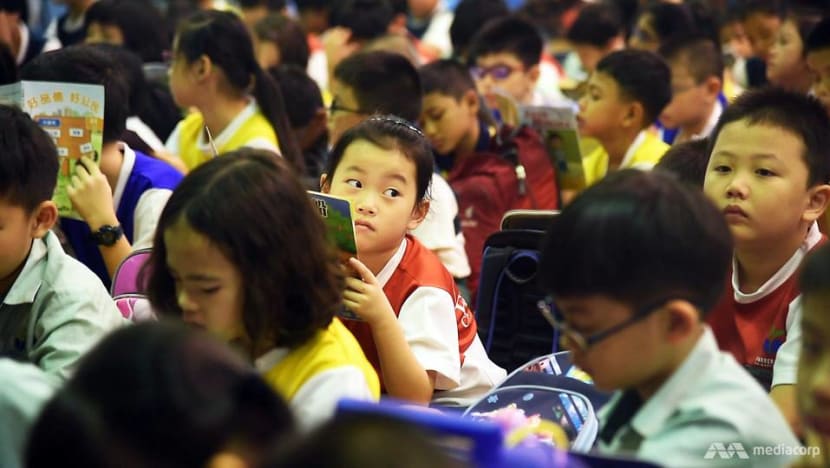
PUTTING IN THE WORK
Chaorui’s parents, neither of whom speak much English, send her for English tuition twice a week. At home, she practises with assessment books.
While it might be tough going, the little girl can look to her brother Chaoyi for help and inspiration.
He’d come to Singapore eight years ago not knowing English, but picked it up quickly and is now in Secondary 2. Almost every evening, he sits with Chaorui as she reads aloud from flash cards, correcting her patiently when she stumbles and encouraging her when she pronounces a word correctly.
“She is very hardworking in school, but playful at home,” he said, ruffling her hair as she grinned cheekily.
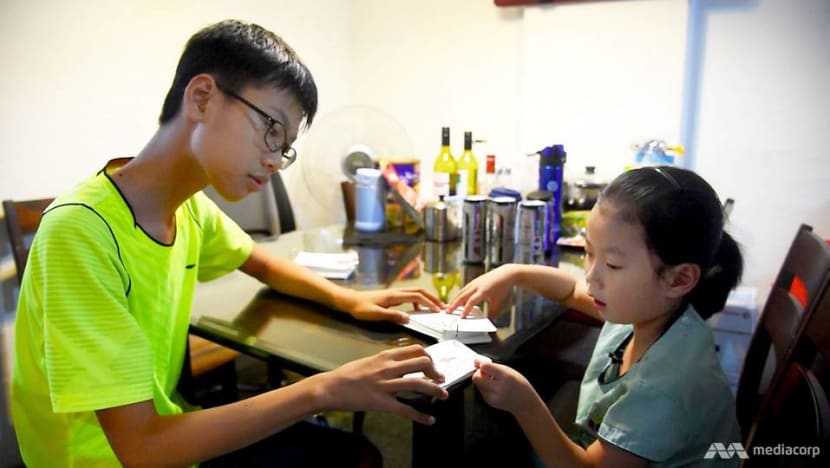
Attitude makes all the difference. In LSP class, Chaorui is an enthusiastic student – always the first among the three students to put her hand up as they try to pick out vowels or pronounce words.
One of the most difficult words she has learnt recently, she said, is “gardener” – a word she enunciates slowly but with confidence.
“It is the person who waters the plants,” she added, a note of pride in her soft voice.
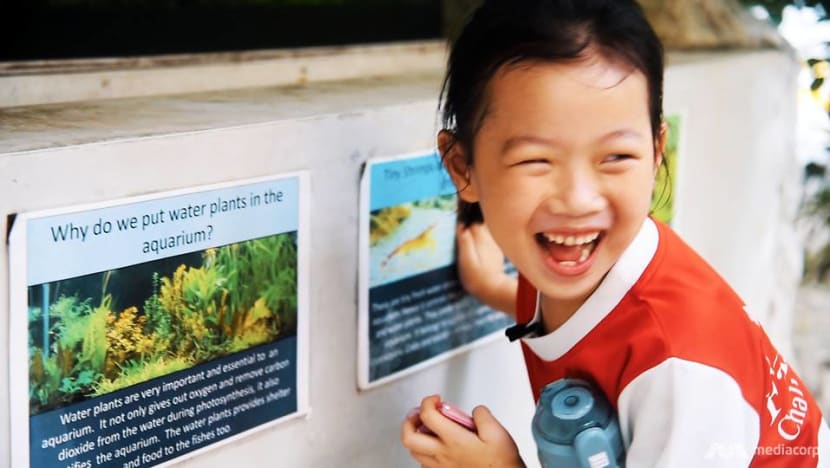
IBRAMSA IDRIS AHAMED, 11: FROM SHY BOY, TO HEAD PREFECT
In another room, an 11-year-old who could not be more different stood in front of his class, presenting an eloquent monologue.
“She pushed me away!” Idris declaimed loudly, with a grimace. “Teenagers on Earth are obviously more dangerous than expected.” With a dramatic flourish, he bowed to his classmates’ applause.
The school’s head prefect, he loves an audience. But Idris was not always this self-assured.
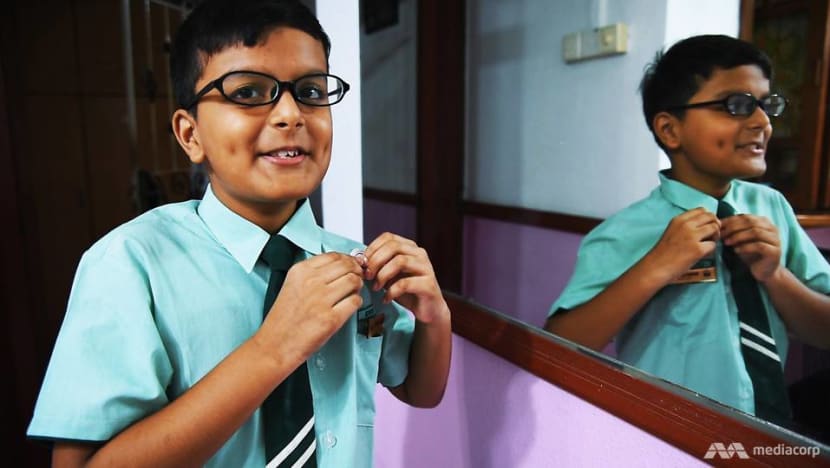
Born in Tamil Nadu in India, he moved to Singapore in 2009 at the age of one when his father, who was working in Singapore, decided to bring his family over. Mohamed Kasim Ibramsa had hoped his children could get to know the local culture from young.
In the first few years, Kasim admitted, “Idris stayed at home mostly. He did not have many friends”. In kindergarten, not knowing much English, a shy five-year-old Idris stuck to a Tamil-speaking friend.
Eventually, though, he pushed himself to learn the language. Said Idris: “My father said, if you do well in English, it will help you in everything. English is in Maths, English is in Science… so that’s the basic you need to learn.”
MAKING OTHERS FEEL INCLUDED
As he got more fluent in English, his confidence grew. By the time he entered Farrer Park in Primary 2, a more outgoing Idris was looking forward to making new friends.
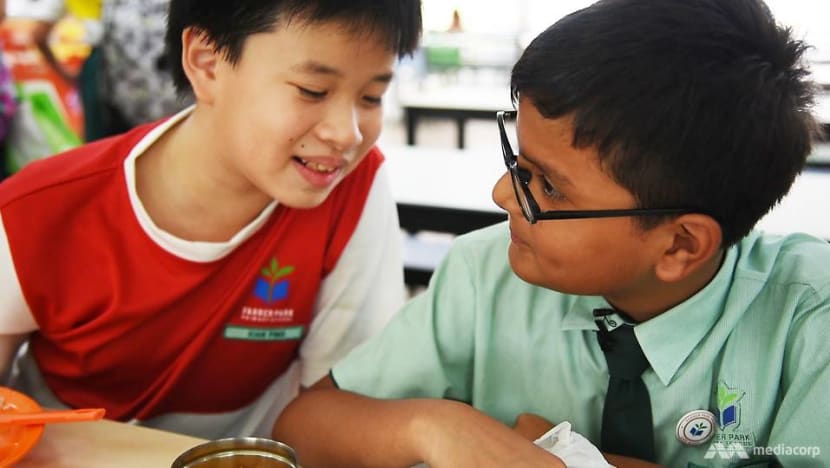
Developing friendships at first can be a challenge for some international students, vice-principal Wendy noted. “The other children around them could be different in terms of skin or hair colour; they may worry that the other children may not accept them.”
Idris wasn’t one of them.
Indeed, classmate Chi-Yun remembers how they quickly became friends. “He introduced himself to all of us, and he wasn’t shy like other people,” he said.
Idris even made it a point to reach out to other newcomers: When Phone, his classmate from Myanmar, joined the school in Primary 4, Idris brought the quiet, bashful boy to the basketball court on his very first day.
“I thought he was one of those guys that never talks, and I was like… it’s okay, let’s just bring him along and we’ll play with him,” said Idris.
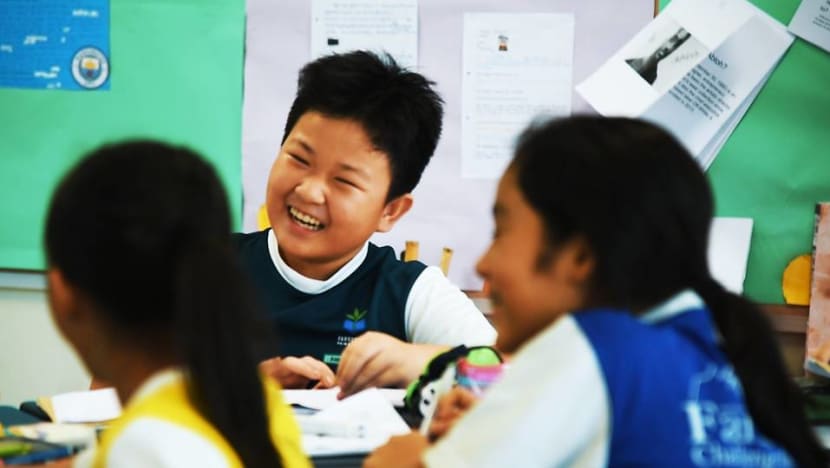
Phone recalled: “I didn’t know how to play basketball… but then we just played. And we became friends.”
Idris is all for making people feel included. When he ran for elections and was voted head prefect by the student body, one of the things he promoted was a bully-free culture.
He thinks there could be more awareness among students of how some comments or casual jokes can come across as insensitive. “Everybody is human, right? This,” he added, pointing to his heart, “is what matters.”
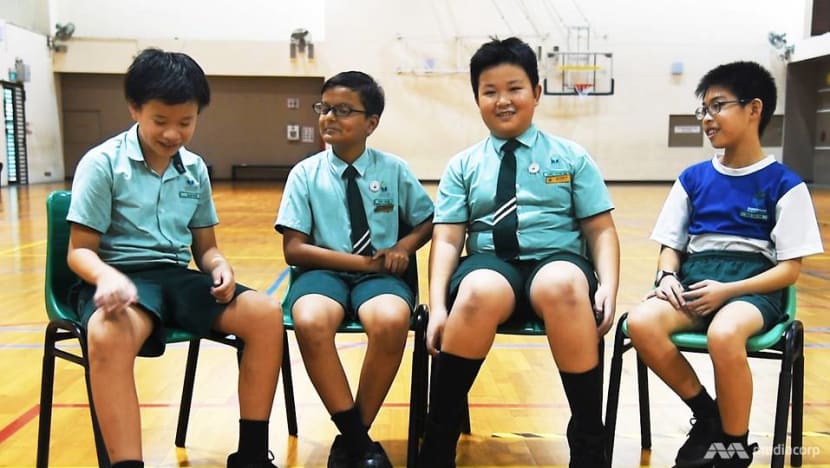
A CULTURAL EXCHANGE
But Idris does appreciate the chance to share what’s different about his culture with peers who are curious.
When he has to stay back after school for prefectorial duties, Idris meets his mum at the school’s side gate to pick up a home-cooked lunch of sambar rasam. And he often gets questions when he unpacks this food.
“Why are you eating this curry?” Phone asked. To which Idris replied, “This isn’t curry, Phone, it’s sambar”, rolling the ‘r’ for dramatic emphasis.
He also gets asked why he eats with his hands. Such questions don’t offend him, he said, “because other people learn my culture, and I learn their culture too”.
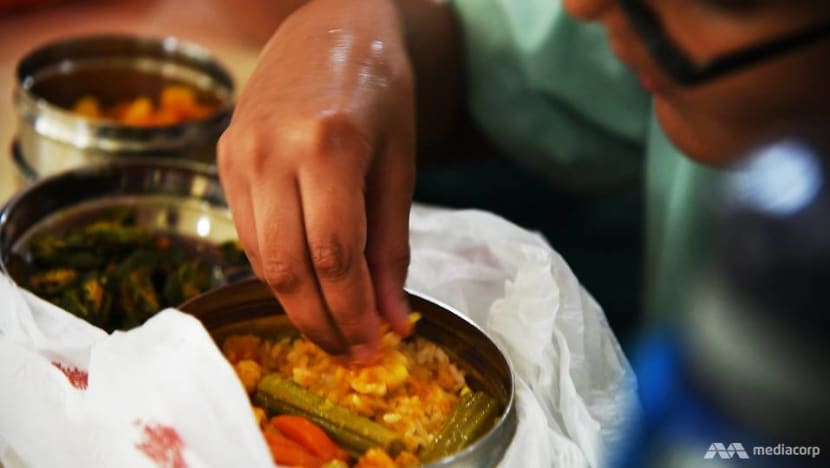
If there’s one thing his parents are concerned about, it’s that he loves his mum’s Indian meals and McDonald’s a little too much. That could be a problem when, like his older brother, he has to serve National Service as a Permanent Resident.
“My older son suffered in BMT (Basic Military Training) because he didn’t like to eat local food. But now he has learnt to eat a bit of fried rice,” said Kasim. “When Idris goes into the army, he might suffer too.
“I always tell him to learn (to like) local dishes. Now I will let him learn himself.”
ALINA ADAMENKO, 10: STRADDLING TWO CULTURES
In a sea of children in the crowded canteen, Alina Adamenko sticks out as she queues to buy a mantou and Milo.
It’s her long golden hair, which is wound tightly and meticulously into two braids every morning by her mother.
“Some people say I’m French,” she said, giggling. “I’m like, why doesn’t anyone know? I’m from the biggest country in the world.”
Close your eyes, and you might think you were listening to a born-and-bred Singaporean. You would be at least partly right.

Alna was born in Singapore to Russian parents, and has spent all 10 of her years here, only returning to Russia occasionally for holidays.
In some ways, Alina is a child of two cultures. While she enjoys the school canteen’s mantou, she also likes the Russian-style dumplings her mother cooks in soup at home.
Like many of her classmates, she takes Chinese language classes. She is an enthusiastic participant in class, confidently reading out loud and raising her hand repeatedly to answer her teacher’s questions.
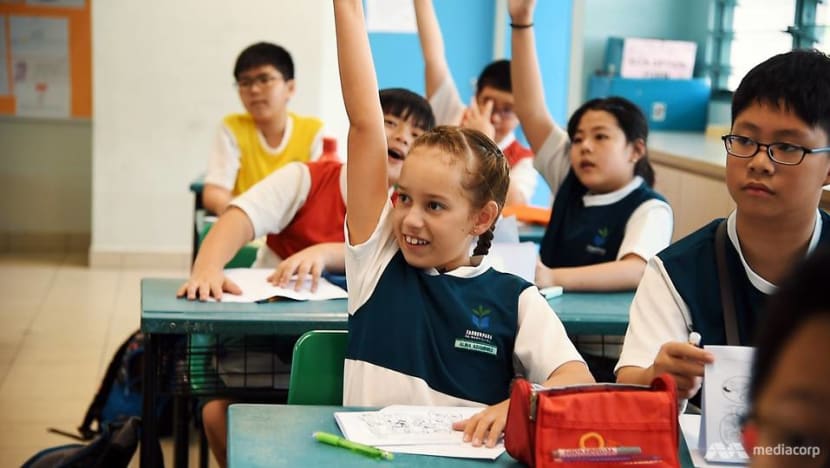
Said Alina’s father, Mikhail Adamenko: “We had to choose a mother tongue when we put her in a local school, so we chose Chinese." His family came from a town in Russia close to the border with China, and he speaks Mandarin himself.
But Alina’s parents want her to stay close to her Russian roots too, even as she embraces local culture. So her after-school schedule is packed with activities: Chinese tuition, taekwondo, swimming, and Russian language and heritage classes which she attends twice a week.
She has learnt a lot about Russian culture, she says, and was proud to wear a Russian traditional costume to school on International Friendship Day.
And it’s a bit of a thrill when friends ask questions about her country or to learn some simple Russian words. “If they pronounce it wrongly, in my heart I’m like, ‘ha ha ha,” she said jokingly.
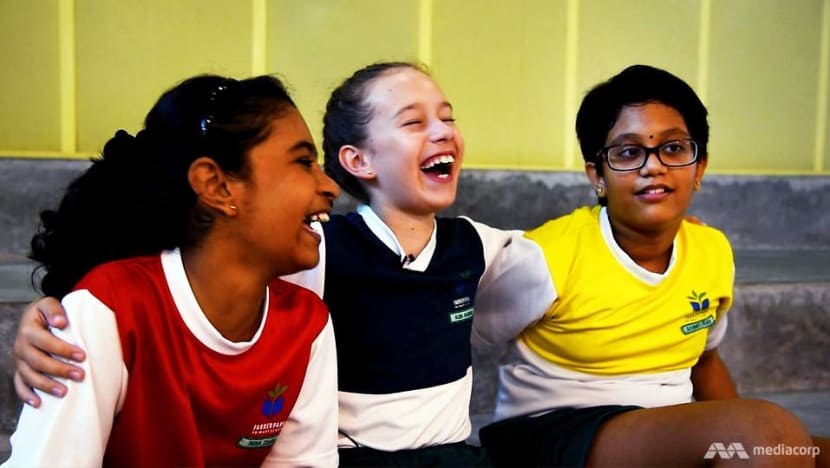
SCHOOLED IN DIVERSITY
To her friends, however, she is Alina first, and Russian second. “She’s a normal person,” said Dhara Lakshmi Soumika. “Except that she’s super-duper joyful.”
Friendships in the school, said vice-principal Wendy, tend to be formed organically. And obvious physical differences like Alina’s hair colour (or even less obvious ones, like one’s birthplace or culture) are easily overlooked.
One reason for this, she added, is their age. “I think as they get older, they may become more aware of the differences,” she said. “But because they are younger, everyone is just another playmate.”
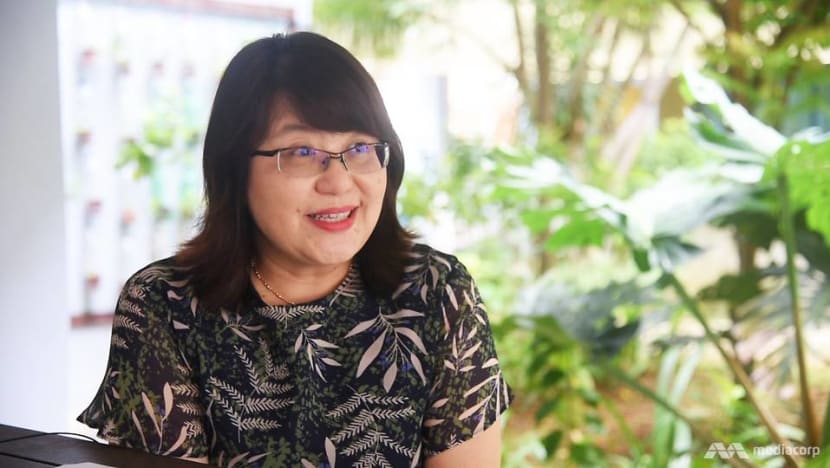
And having international students around who look distinct and come from dissimilar backgrounds can benefit their Singaporean peers. “They become more accepting of diversity,” Wendy said.
“I think it helps them a lot. It really increases their global awareness, and cross-cultural skills are developed from their interactions with the international students.”
As for Alina, she can only stay in Singapore for as long as her father has a job here. But to her, this is home. “I want to stay in Singapore,” she said. “It’s always summer here.”
Besides, she wants to be near her Singaporean “besties” – Soumika and Nuha Zahra Mohamed Ziauddin. “We will be friends forever,” said Alina, giving Zahra a bear hug. “Until we die.”
This story by CNA Insider was done in collaboration with Gov.sg.
